Hey Everybody! Today we will discuss one of the most favorite, cutest, and most adorable dog species ‘The Pomeranian Teacup dog’. When it comes to canine cuteness, few breeds can compete with the charm of a Pomeranian Teacup. These pint-sized furballs capture hearts with their fluffy coats, perky ears, and boundless energy. If you’re considering welcoming one into your home or are simply intrigued by these tiny wonders, you’ve come to the right place. In this article, we’ll delve deep into the world of Pomeranian Teacups, exploring everything from their history and characteristics to care tips and FAQs.
Pomeranian Teacup: A Closer Look
Pomeranian Teacup dogs, often simply referred to as “Teacups,” are a miniature version of the popular Pomeranian breed. Despite their small stature, they are bursting with personality. Let’s get to know them better.
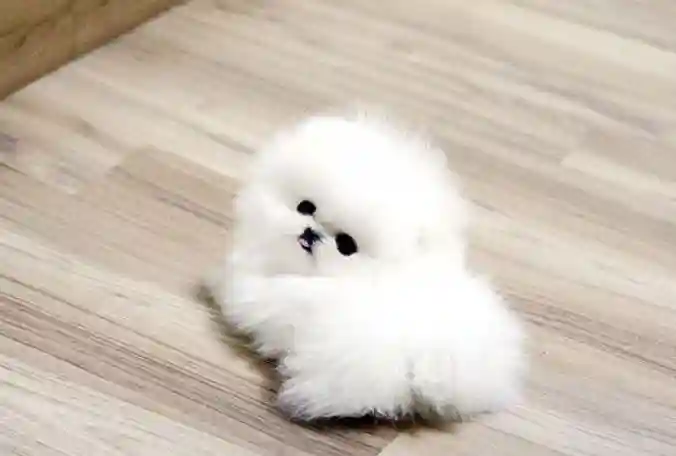
Origins and History
The Pomeranian Teacup owes its lineage to the larger Pomeranian1 breed, which hails from the Pomerania region in Europe. These tiny canines were selectively bred down in size over generations, resulting in the adorable Teacup variety we adore today.
Pomeranian Teacups Characteristics
| Characteristic | Description |
|---|---|
| Size | Petite, typically 2 to 5 pounds (0.9 to 2.3 kg) |
| Appearance | Luxurious double coat, various colors (e.g., orange, cream, black) |
| Temperament | Confident, intelligent, loyal |
| Energy Levels | Surprisingly energetic, enjoys playtime and short walks |
| Lifespan | 12 to 16 years (with proper care) |
Size: Pomeranian Teacups are petite pups, typically weighing between 2 to 5 pounds (0.9 to 2.3 kg). Their diminutive size is a major part of their charm.
Appearance: These dogs sport a luxurious double coat, often in various colors such as orange, cream, black, or sable. Their expressive eyes and fox-like faces are impossible to resist.
Temperament: Pomeranian Teacups are known for their larger-than-life personalities. They’re confident and intelligent. They often exhibit a strong sense of loyalty to their owners.
Energy Levels: Despite their small size, Teacups are surprisingly energetic. They enjoy playtime and short walks, making them suitable for both apartments and houses with yards.
Comparing Teacup dogs and Mini Pomeranian dogs
In the enchanting world of Pomeranians2, two charming varieties often capture the hearts of dog enthusiasts: Pomeranian Teacup dogs and Mini Pomeranian dogs. While these breeds share a common lineage and many endearing qualities, there exists a notable distinction that sets them apart – their size. Pomeranian Teacup dogs are renowned for their miniature stature, fitting comfortably into the palm of your hand, whereas Mini Pomeranians, while still small and compact, are slightly larger. This size variance carries implications for their energy levels, suitability for families with children, and overall care requirements, making it an essential factor to consider when choosing the perfect furry companion.
Let’s compare Pomeranian Teacup dogs and Mini Pomeranian dogs to understand the differences between them:
| Characteristic | Pomeranian Teacup Dog | Mini Pomeranian Dog |
|---|---|---|
| Size | Extremely small, typically 2 to 5 pounds (0.9 to 2.3 kg) | Small, but slightly larger, around 3 to 7 pounds (1.4 to 3.2 kg) |
| Appearance | Compact and petite, with a tiny frame | Small and compact, but a bit larger |
| Coat | Dense double coat, various colors | Dense double coat, various colors |
| Temperament | Confident, intelligent, and loyal | Confident, intelligent, and loyal |
| Energy Levels | Surprisingly energetic for their size | Energetic, suitable for active families |
| Lifespan | Typically 12 to 16 years | Typically 12 to 16 years |
| Suitability for | Ideal for individuals or families | Great for individuals or families |
| Families with Children | Requires supervision due to size | Requires supervision due to size |
While both Pomeranian Teacup dogs and Mini Pomeranian dogs share many similarities, such as their intelligence, loyalty, and grooming needs, the primary difference lies in their size. Pomeranian Teacups are exceptionally tiny, weighing between 2 to 5 pounds, while Mini Pomeranians are a bit larger, ranging from 3 to 7 pounds. This size distinction can influence factors like their suitability for families with children and their energy levels. However, both breeds make wonderful companions for those who are prepared for their care and attention.
The Controversy Surrounding Teacup Dogs
The term “Teacup” about small dog breeds, including Teacup Pomeranians, Teacup Chihuahuas, and Teacup Yorkies, likely originated from their diminutive size and the idea that they are small enough to fit inside a teacup or a coffee cup. This name has become a colloquial and marketing term used to describe exceptionally tiny dogs within their respective breeds.
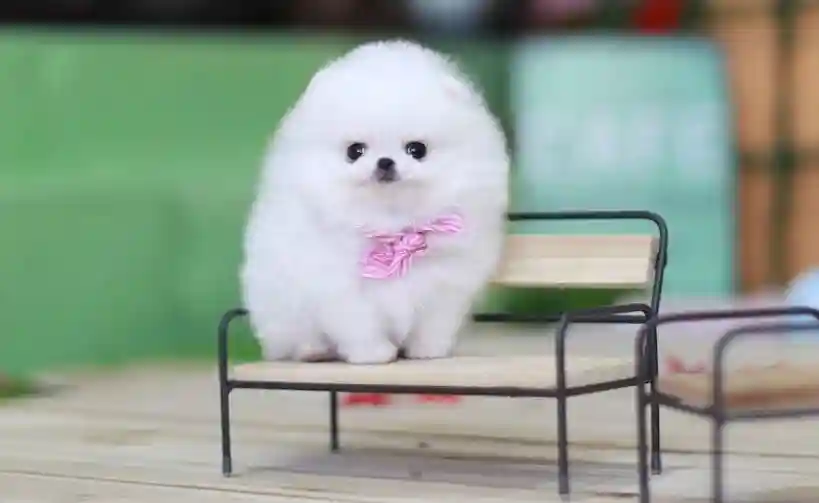
The concept of miniaturizing dog breeds to create smaller versions has been a longstanding practice in the world of dog breeding. Selective breeding techniques were employed to produce dogs with reduced size while retaining the characteristics of the parent breed. Over time, breeders aimed to create dogs that were not only smaller but also possessed the desirable traits and appearance of their standard-sized counterparts.
As breeders successfully produced these tiny dogs, they began using the term “Teacup” to market them as unique and highly sought-after companions. The name “Teacup” likely stuck because it evokes an image of extreme smallness, making these dogs even more appealing to potential owners.
Caring for Your Pomeranian Teacup
Owning a Pomeranian Teacup comes with its own set of responsibilities. Here’s how to ensure your tiny companion thrives.
Pomeranian Teacups Feeding
Pomeranian Teacups require a balanced diet, preferably high-quality dog food specifically formulated for small breeds. Be mindful of portion sizes to prevent overfeeding. Feeding your Pomeranian Teacup is an important aspect of their care. It requires careful attention to ensure their health and well-being. These tiny dogs have unique dietary needs due to their small size and high energy levels. Here’s a detailed guide on how to feed your Pomeranian Teacup:
1. Quality Dog Food: Begin by selecting a high-quality dog food specifically formulated for small breeds. Look for brands that list real meat as the primary ingredient and avoid foods with excessive fillers or artificial additives. Opt for options that provide a balanced blend of protein, fats, and carbohydrates to meet your Teacup’s nutritional requirements.
2. Portion Control: Pomeranian Teacups have tiny stomachs, so it’s essential to practice portion control. Follow the recommended feeding guidelines on the dog food packaging, but keep in mind that individual needs may vary based on your Teacup’s age, activity level, and metabolism. Dividing their daily portion into two or three meals can help prevent overeating and maintain stable energy levels.
3. Freshwater Access: Ensure that your Teacup always has access to fresh, clean water. Proper hydration is crucial for their overall health and digestion. Check their water bowl regularly to ensure it’s filled throughout the day.
4. Special Considerations: Due to their small size, Pomeranian Teacups can be prone to dental issues. Incorporate dental care into their feeding routine by offering dental chews or brushing their teeth regularly to prevent plaque buildup and tooth decay.
5. Treats and Snacks: While it’s tempting to indulge your Teacup with treats and snacks, be mindful of portion sizes. Choose small, low-calorie treats, and use them sparingly during training sessions. Overfeeding treats can lead to weight gain, which can be detrimental to their health.
6. Monitor Weight: Regularly monitor your Teacup’s weight to ensure they are maintaining a healthy size. Excessive weight gain can lead to various health issues. If you notice any significant weight changes, consult your veterinarian for guidance on adjusting their diet.
7. Dietary Restrictions: Some Pomeranian Teacups may have food allergies or sensitivities. If your dog exhibits signs of digestive issues, skin problems, or excessive itching, consult with your vet to determine if dietary changes are necessary.
Fun facts About Teacup Pomeranian
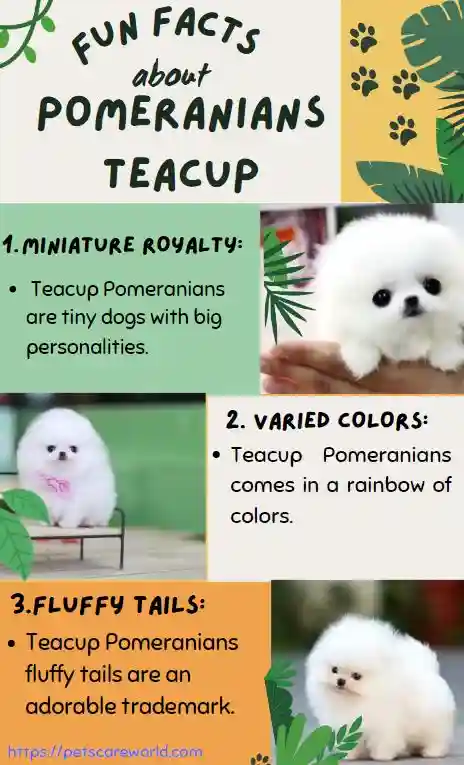
Pomeranian Teacups Exercise
Regular exercise is crucial to keep your Teacup happy and healthy. Despite their small size, these pint-sized pups have plenty of energy to burn. Here’s a detailed guide on how to provide the right amount of exercise for your Pomeranian Teacup:
1. Daily Walks: Pomeranian Teacups may be small, but they still require daily walks to expend their energy and provide mental stimulation. Aim for at least two short walks per day, each lasting around 15 to 20 minutes. These outings allow your Teacup to explore their surroundings and interact with the environment.
2. Playtime: Interactive playtime is vital for Pomeranian Teacups. Engage them in games like fetch, tug-of-war, or hide-and-seek. Their playful nature makes them enjoy these activities immensely. Be sure to use toys that are appropriately sized for their small mouths to prevent choking hazards.
3. Indoor Exercise: On days when outdoor walks may not be possible due to inclement weather, create an indoor play area. Use obstacles, tunnels, and interactive toys to keep your Teacup mentally and physically active. These indoor activities are especially important to prevent boredom, as Teacups are prone to anxiety when left unstimulated.
4. Socialization: Expose your Pomeranian Teacup to different environments, people, and other dogs. Socialization is crucial to help them develop good behavior and prevent fear or aggression towards new situations. Puppy classes and playdates with other dogs can be beneficial.
5. Mental Stimulation: Teacups are intelligent dogs, and mental exercise is just as important as physical activity. Use puzzle toys and brain teasers to challenge their minds. Training sessions that incorporate commands and tricks also provide mental stimulation.
6. Watch for Overexertion: Due to their small size, Pomeranian Teacups can tire quickly, especially in hot weather. Watch for signs of overexertion, such as excessive panting, drooling, or slowing down during walks. Always carry water to keep them hydrated.
7. Obedience Training: Pomeranian Teacups are trainable and benefit from obedience training. Teach them basic commands like “sit,” “stay,” and “come.” This not only enhances their behavior but also provides mental exercise.
8. Playdates: Arrange playdates with other small, friendly dogs to ensure your Teacup gets the social interaction they need. Supervise these playdates closely to ensure safety.
9. Age-Appropriate Activities: As your Teacup ages, adjust their exercise routine to accommodate their changing needs. Senior Teacups may require gentler activities, such as short strolls and gentle play.
10. Consult Your Vet: Before starting any exercise regimen, consult your veterinarian. They can provide guidance based on your Teacup’s age, health, and individual needs.
Grooming Pomeranian Teacups
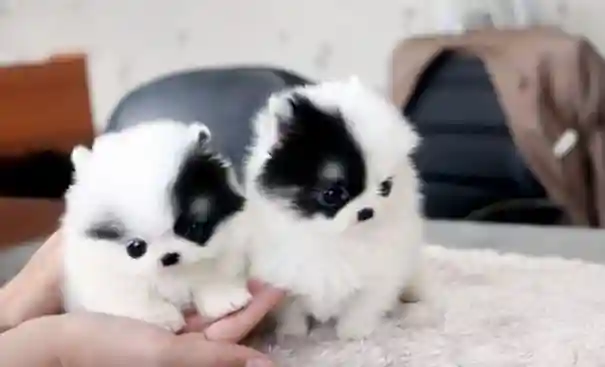
Grooming is an essential aspect of caring for your beloved Pomeranian Teacup. Their beautiful double coat requires regular maintenance to keep them looking their best and to ensure their overall health. Here’s a detailed guide on how to properly groom your Pomeranian Teacup:
1. Brushing: Pomeranian Teacups have a dense double coat that can quickly become tangled and matted if not brushed regularly. Use a slicker brush or a pin brush to gently comb through their fur. Aim to brush your Teacup at least three to four times a week to prevent mats and remove loose hair.
2. Bathing: Bathing should be done occasionally, typically once every 4 to 6 weeks or when your Teacup gets dirty. Use a mild, dog-specific shampoo to avoid skin irritation. Be sure to rinse thoroughly to remove all traces of shampoo.
3. Coat Trimming: To maintain a neat appearance, consider trimming your Teacup’s coat, especially around the paws and hindquarters. Carefully trim any long hairs that may get dirty or tangled. If you’re not confident in your trimming skills, consult a professional groomer.
4. Eyes and Tear Stains: Pomeranian Teacups are prone to tear stains due to their small facial structure. Regularly clean the area around their eyes with a damp, clean cloth to prevent staining. Consult your vet for tear stain removal products if needed.
5. Dental Care: Dental hygiene is vital for Pomeranian Teacups. Brush their teeth regularly using a dog-specific toothbrush and toothpaste. This helps prevent dental issues common in small breeds.
6. Nail Care: Trim your Teacup’s nails every few weeks to prevent overgrowth. Use a dog nail clipper and be cautious not to cut too close to the quick, which can cause bleeding. If you’re unsure, consult a professional groomer or vet.
7. Ear Cleaning: Check your Teacup’s ears regularly for signs of dirt or infection. Clean their ears gently using a dog-specific ear cleaner and a cotton ball. Avoid inserting anything into the ear canal.
8. Anal Gland Expression: Pomeranian Teacups are prone to anal gland issues. Your veterinarian or groomer can help express their anal glands if needed. Look out for signs of discomfort, such as scooting or excessive licking.
9. Professional Grooming: Consider scheduling regular appointments with a professional groomer to maintain your Teacup’s coat. Groomers can provide expert services like trimming, styling, and expressing anal glands.
10. Positive Reinforcement: Make grooming a positive experience for your Teacup by offering treats and praise during and after each grooming session. This positive reinforcement helps them associate grooming with pleasant experiences.
11. Skin Health: Keep an eye on your Teacup’s skin for any signs of irritation, redness, or unusual lumps. If you notice any skin issues, consult your vet promptly.
Socialization for Pomeranian Teacups
Socialization is a vital aspect of raising a well-adjusted and happy Pomeranian Teacup. These tiny dogs, despite their small size, have big personalities, and early socialization helps them become confident, friendly, and adaptable companions. Here’s a detailed guide on how to socialize your Pomeranian Teacup effectively:
1. Start Early: Begin socializing your Pomeranian Teacups as early as possible, ideally when they are puppies. Early socialization provides a solid foundation for their behavior throughout their lives.
2. Exposure to Various Environments: Introduce your Teacup to various environments, including parks, streets, and indoor spaces. This exposure helps them become comfortable in different settings and reduces anxiety in new places.
3. Meeting New People: Encourage your Teacup to interact with different people, including family members, friends, and strangers. Teach them that meeting new people is a positive experience by offering treats and praise during interactions.
4. Interacting with Other Dogs: Arrange playdates with other well-behaved dogs, especially those of similar size. These interactions help your Teacup learn social cues and engage in healthy play. Always supervise playtime to ensure safety.
5. Positive Experiences: Make every socialization experience positive for your Teacup. Use treats, toys, and affection to reward good behavior. Avoid situations that may cause fear or stress, and gradually expose them to potentially challenging situations.
6. Exposure to Different Sounds: Familiarize your Teacup with various sounds, such as traffic noise, sirens, vacuum cleaners, and doorbells. This helps them become less sensitive to loud or unfamiliar sounds.
7. Handling and Grooming: Get your Teacup used to being handled and groomed. Touch their paws, ears, and body regularly. This not only makes grooming easier but also helps them tolerate veterinary examinations.
8. Obedience Training: Enroll your Teacup in puppy obedience classes. These classes teach basic commands and reinforce good behavior. It also provides an opportunity for your Teacup to socialize with other puppies.
9. Exposure to Children and Other Pets: If you have children or other pets at home, ensure that your Teacup has positive interactions with them. Teach children how to handle and play with the dog gently.
10. Gradual Desensitization: If your Teacup displays fear or anxiety towards specific situations, work on gradual desensitization. Start with minimal exposure and gradually increase the intensity of the situation while offering rewards for calm behavior.
11. Consistency: Be consistent in your socialization efforts. Regularly expose your Teacup to different people, places, and experiences to reinforce their social skills.
12. Be Patient: Each dog is unique, and some may be more reserved or cautious than others. Be patient and understanding, and avoid pushing your Teacup into situations that make them uncomfortable.
13. Professional Help: If you encounter behavioral challenges during socialization, consider seeking assistance from a professional dog trainer or behaviorist. They can provide guidance tailored to your Teacup’s specific needs.
Pomeranian Teacups Training
Training your Pomeranian Teacup is a vital part of raising a well-behaved and happy pet. Despite their small size, these dogs are intelligent and eager to please, making them highly trainable. Here’s a detailed guide on how to train your Pomeranian Teacup effectively:
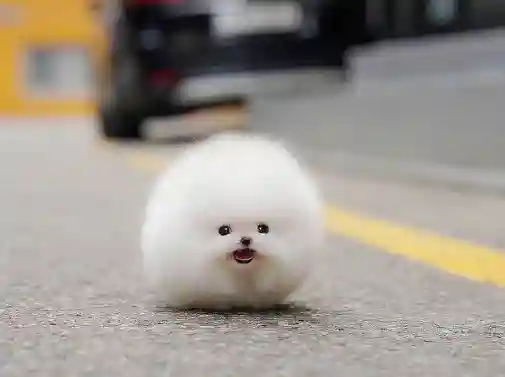
1. Start Early: Begin training your Pomeranian Teacup when they are still a puppy. Early training helps establish good behaviors and habits from the outset.
2. Positive Reinforcement: Use positive reinforcement techniques, which involve rewarding desired behaviors with treats, praise, or affection. Teacups respond well to positive feedback and are motivated by rewards.
3. Consistency: Be consistent in your commands and expectations. Use the same cues and rewards each time to avoid confusing your Teacup.
4. Basic Commands: Teach basic commands like “sit,” “stay,” “come,” and “down.” These commands form the foundation of obedience and safety.
5. House Training: Pomeranian Teacups can be house-trained, but it requires patience and consistency. Establish a regular bathroom schedule and provide positive reinforcement when they are eliminated in the right spot.
6. Socialization Training: Socialize your Teacup from a young age. Expose them to different people, pets, and situations to help them develop good behavior and adaptability.
7. Leash Training: Get your Teacup used to walking on a leash. Start with short walks, and use treats to encourage walking calmly by your side.
8. Crate Training: Crate training can be helpful for housebreaking and providing a safe space for your Teacup. Make the crate a positive place by placing treats and toys inside.
9. Clicker Training: Clicker training is a useful tool for teaching precise behaviors. Pair the sound of a clicker with treats to mark desired actions.
10. Avoid Punishment: Avoid harsh punishments or physical corrections during training. Pomeranian Teacups are sensitive, and punitive methods can cause fear and anxiety.
11. Training Sessions: Keep training sessions short and frequent, about 10-15 minutes each. Pomeranian Teacups have short attention spans, so regular, brief sessions are more effective.
12. Social Commands: Teach your Teacup social commands like “leave it” and “drop it” to prevent them from picking up harmful items during walks.
13. Problem Solving: Address behavioral issues promptly. If your Teacup displays problem behaviors, consult a professional dog trainer or behaviorist for guidance.
14. Be Patient: Be patient and understanding during training. Pomeranian Teacups may have occasional setbacks or stubborn moments, but with time and patience, they can learn to obey consistently.
15. Social Rewards: Social rewards, such as praise and affection, are essential for your Teacup. They thrive on your attention and will work harder to please you.
16. Consistent Rules: Ensure that all family members follow the same training rules. Consistency is key to preventing confusion for your Teacup.
Purchasing a Teacup Pomeranian Puppy from a Reputable Breeder
Researching Reputable Breeders: Begin your journey by researching reputable breeders who specialize in Teacup Pomeranians. Start by checking national and local breed clubs, online breeder directories, and recommendations from trusted sources.
Visit the Breeder in Person: Whenever possible, visit the breeder’s facility in person. This allows you to see the conditions in which the puppies are raised and interact with the breeder directly. It’s an opportunity to ask questions and gauge their knowledge and dedication to the breed.
Ask for References: Request references from previous buyers who have purchased Teacup Pomeranian puppies from the breeder. Speaking with other dog owners can provide valuable insights into their experiences.
Health Screening and Certifications: Inquire about health screening and certifications for the puppies and the parent dogs. Reputable breeders conduct health tests to identify and mitigate genetic health issues common to the breed.
Puppy Health Guarantee: A responsible breeder should offer a written health guarantee for their puppies. This guarantee typically covers the puppy’s health for a specified period after purchase and outlines the breeder’s responsibilities.
Ask Questions: Don’t hesitate to ask the breeder questions about the puppies, their care, and their breeding practices. A knowledgeable breeder should be able to provide detailed information about the breed, the puppy’s upbringing, and more.
Puppy Socialization: Inquire about the breeder’s socialization practices. Proper socialization during the early stages of a puppy’s life is crucial for their development and behavior.
Visit with the Puppy’s Parents: If possible, meet the puppy’s parents. This gives you an idea of the potential size, temperament, and appearance of your Teacup Pomeranian as they grow.
Ask for Documentation: Ensure that the breeder provides you with all necessary documentation, including the puppy’s vaccination records, microchip information, and registration papers if applicable.
Avoid Red Flags: Be cautious of breeders who prioritize extreme smallness over the health and well-being of the dogs. Avoid those who seem more interested in making a sale than in ensuring the best interests of the puppies.
Responsible Ownership: Be prepared for the responsibilities of Teacup Pomeranian ownership, including their specialized care needs, health considerations, and potential fragility due to their small size.
Finalize the Sale: If you’re satisfied with the breeder’s practices and the puppy, finalize the sale according to their terms and conditions. Ensure you receive all necessary paperwork and information about the puppy’s diet, care, and veterinary history.
Teacup Pomeranian Growth Chart
| Age (Months) | Height (Inches) | Weight (Pounds) |
|---|---|---|
| 2 | 3 – 4 | 0.5 – 1 |
| 4 | 5 – 6 | 1 – 1.5 |
| 6 | 6 – 7 | 1.5 – 2 |
| 8 | 7 – 8 | 2 – 2.5 |
| 10 | 8 – 9 | 2.5 – 3 |
| 12 | 8 – 9 | 2.5 – 3 |
| 14 | 8 – 9 | 2.5 – 3 |
| 16 | 8 – 9 | 2.5 – 3 |
| 18 | 8 – 9 | 2.5 – 3 |
| 20 | 8 – 9 | 2.5 – 3 |
| 22 | 8 – 9 | 2.5 – 3 |
Size of Adult Teacup Pomeranians
A Teacup Pomeranian typically reaches full-grown size at around 9 to 12 months of age. However, some may continue to fill out and develop their full adult appearance up to 18 months. Keep in mind that the exact timing of full growth can vary from one Teacup Pomeranian to another, so it’s essential to monitor their development and provide appropriate care throughout their early stages of life.
Teacup Pomeranian Colors and Varieties

Teacup Pomeranians come in a delightful array of colors and varieties, making them even more appealing to dog enthusiasts. These tiny dogs exhibit a wide range of coat colors and patterns. Here are some of the most common Teacup Pomeranian colors and varieties:
- Orange: This is perhaps the most iconic Pomeranian color. Orange Pomeranians, often referred to as “red,” have a vibrant and rich coat color that can range from deep rust to a lighter apricot hue.
- Cream: Cream Pomeranians have a lovely pale coat that may have slightly darker shadings around the ears and back.
- Black: Black Teacup Pomeranians feature a solid black coat with no other color markings. They have a striking and elegant appearance.
- Sable: Sable Pomeranians have a mixture of colors in their coat, typically with a dark or black base and lighter shades around the face and paws.
- Parti-Color: Parti-color Pomeranians have a two-tone coat with distinct color patches or markings. These patches can combine white with any other Pomeranian color.
- Merle: Merle Pomeranians display a unique and striking pattern with patches of color and a mottled appearance. Blue merle, chocolate merle, and red merle are some common variations.
- Blue: Blue Pomeranians have a bluish-gray coat that can vary in shade intensity.
- Chocolate: Chocolate Teacup Pomeranians boast a rich brown coat color that can range from dark chocolate to lighter cocoa shades.
- Lavender: Lavender Pomeranians have a pale, silvery-gray coat with a subtle lavender hue.
- Parti-Merle: Parti-merle Pomeranians combine the parti-color pattern with the merle pattern, resulting in a distinctive and eye-catching appearance.
- Beaver: Beaver Pomeranians feature a pale brown coat with a hint of gray or lavender undertones.
- Wolf Sable: Wolf sable Pomeranians have a unique pattern that combines gray, black, and tan shades, creating a wolf-like appearance.
- Cream Sable: Cream sable Pomeranians blend the cream color with sable markings for a charming and elegant look.
- Blue Sable: Blue sable Pomeranians combine the blue coat with sable markings, resulting in a striking and rare color combination.
- Brindle: Brindle Pomeranians exhibit a striped pattern on their coat, typically with a base color and darker stripes running across it.
How Long Does a Teacup Pomeranian Live?
Teacup Pomeranians, like their standard-sized counterparts, generally have a relatively long lifespan compared to some other dog breeds. On average, a healthy and well-cared-for Teacup Pomeranian can live anywhere from 12 to 16 years or even longer.
How Much Do Pomeranian Teacups Cost?
The cost of a Pomeranian Teacup can vary widely depending on several factors, including the breeder’s reputation, the dog’s pedigree, its color, and its overall quality. On average, you can expect to pay anywhere from $1,000 to $3,000 for a Pomeranian Teacup puppy. However, some rare or exceptionally high-quality Teacups can be priced significantly higher, ranging from $3,000 to $7,000 or more. We advise you to do proper research and must choose from a reputable breeder. Teacup Pomeranians require more care and expenses throughout their lives.
Do Teacup Pomeranians Shed?
Yes, Teacup Pomeranians do shed. Pomeranians, including Teacup Pomeranians, have a double coat consisting of a soft, dense undercoat and a longer, coarser outer coat. This double coat is designed to keep them warm and protect them from the elements.
Teacup Pomeranians, like all Pomeranians, shed their fur regularly. They typically experience seasonal shedding, which means they shed their undercoat more heavily during certain times of the year, usually in the spring and fall, to prepare for changes in temperature.
While they are small in size, Teacup Pomeranians can produce a surprising amount of loose fur, especially during shedding seasons. To manage their shedding and keep their coat healthy, consider following our Grooming Section.
Are Teacup Pomeranians Hypoallergenic?
Teacup Pomeranians, like standard Pomeranians3, are not considered hypoallergenic. Hypoallergenic dog breeds are those that are less likely to trigger allergies in individuals who are sensitive to allergens like dog dander and saliva.
Pomeranians4, including Teacup Pomeranians, have a double coat, and they do shed. The shedding of fur, along with the presence of skin oils and proteins, can potentially contribute to allergen exposure in the environment. Additionally, dog allergies are primarily triggered by proteins found in a dog’s skin cells, urine, and saliva, rather than the length or type of coat.
While no dog breed can be guaranteed hypoallergenic, some breeds are known to produce fewer allergens or shed less, which can be more suitable for individuals with allergies. If you or someone in your household has allergies and is considering a Teacup Pomeranian, it’s essential to spend time with the dog beforehand to assess any allergic reactions.
Conclusion
In the world of small dog breeds, Pomeranian Teacups stand out as both adorable and endearing companions. Their small stature conceals big personalities, making them a popular choice among dog lovers. By providing them with the right care, attention, and love, you can ensure that your Pomeranian Teacup becomes a cherished member of your family.
If you’re considering adding a Pomeranian Teacup to your household, remember to prioritize their well-being by following the guidelines mentioned in this article. With the right knowledge and commitment, your Teacup will bring joy and happiness to your life for years to come.
FAQs About Pomeranian Teacups
Are Pomeranian Teacups suitable for families with children?
Yes, they can be great family pets, but due to their small size, supervision is vital to prevent accidental injury to the dog.
How do I house-train my Pomeranian Teacup?
Consistent crate training and a regular bathroom schedule are key. Positive reinforcement with treats and praise helps too.
Do Pomeranian Teacups have health issues due to their size?
Yes, their small size can make them prone to dental problems, luxating patellas, and hypoglycemia. Regular vet check-ups are essential.
What is the average lifespan of a Pomeranian Teacup?
On average, they live between 12 to 16 years, but with proper care, some have been known to reach their late teens.
Can I groom my Teacup at home, or should I take them to a professional groomer?
While basic grooming can be done at home, consider occasional professional grooming for a polished look.
Are Pomeranian Teacups suitable for first-time dog owners?
They can be, as long as you’re prepared for the responsibility and commit to proper training and care.
Article Sources & Footnotes
“We at PetsCareWorld are committed to providing accurate and reliable information. Our articles are thoroughly researched, reviewed by experts, and based on high-quality sources, including vet consultations and peer-reviewed studies. You can trust the information we provide.”






